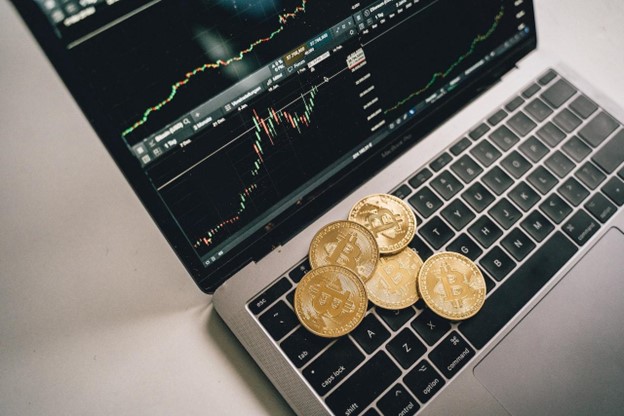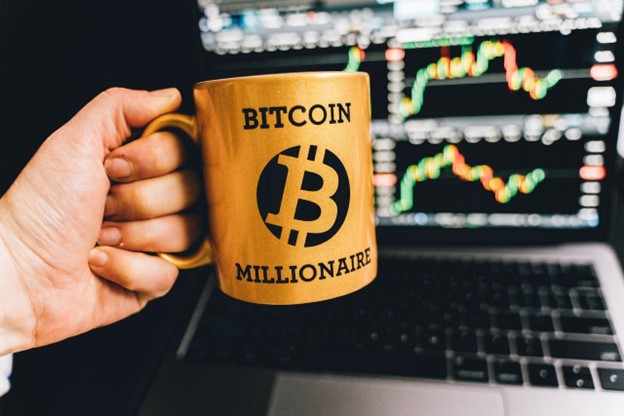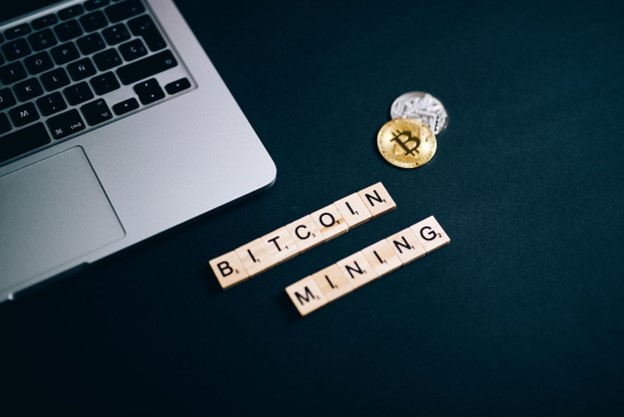Cryptocurrencies are more than 10 years old now and are gaining wider and wider acceptance as time go by. However, they are still considered some of the riskiest investments in the world. It may seem like common sense to view them with suspicion as they’re not currently bound by much regulation or control. However, the truth is much more complicated.
Cryptocurrencies are often seen as an investment tool, or a weapon against inflation. In recent times, as the value of Bitcoin has climbed to tens of thousands of dollars, this belief has only grown. With people like Elon Musk and Jeff Bezos have dabbling in cryptocurrencies themselves, the commercial appeal has grown.
Yet, the ROI on cryptocurrencies can shift as easily as the wind. So, why is cryptocurrency so volatile? Let’s find out.
1. Investors See Cryptocurrency as a Tool to Counter Inflation
In one way, cryptocurrencies are like gold and silver. Precious metals are used at times of great economic uncertainty as a hedge against inflation. They are also used as investment vehicles so that short, but large gains can be made.
During the COVID-19 pandemic, Bitcoin and other cryptocurrencies surged in value. Bitcoin reached a value over $68,000 in 2021 and crashed soon after. However, it’s for these large gains and surges that investors are attracted to Bitcoin. There is a chance that if you pull out at the right time, you will make a huge profit. This is one of the reasons cryptocurrency is so volatile.

However, there is a huge asterisk next to this. Bitcoin only began climbing in value during the second year of the pandemic. During all of 2020, it more or less experienced a plateau in its value. According to Steven Lubka, the director of private consumers at Swan Bitcoin, it only counters inflation fueled by monetary expansion. It is less effective when inflation is caused by food and energy supply disruption.
This checks out since the food and energy shortages can’t be remedied by Bitcoin. If you’re looking to grow your wealth or retain its value, then Bitcoin seems like the perfect vessel. However, when you need to buy food, Bitcoin is not very effective as a currency. Your neighborhood grocery store won’t accept Bitcoin for either a dozen eggs or a carton of milk, or at least not at the moment, even though some bigger businesses are already accepting some crypocurrency as payment.
This brings us to the conundrum of developing countries. Developing nations like Brazil or Venezuela have seriously considered using Bitcoin to retain their currency’s value. Nation’s whose currencies have experienced an incredible devaluation have had no choice but to experiment with other options.
In 2021, 51% of crypto owners in Brazil and Hong Kong, and 54% in India purchased crypto for the first time. This was an incredibly volatile time in the world, but specifically for developing nations. So, cryptocurrencies seemed like a very solid bet with all the volatility going on in the world at the time.
Yet, not everything is as it seems. A deeper look into cryptocurrencies has shown that they currently aren’t the inflationary hedge they seemed, although some believe they eventually will. The performance of cryptocurrencies post the COVID-19 pandemic has been terrible. Bitcoin and Ether have lost half their value. Terra, the lauded stablecoin, lost about $400 billion in crypto market cap in the span of a few days.
These are warning signs which show that cryptocurrencies are not governed by any dependable factors. They are simply at the mercy of market perception. Up one day and down the next, they hold no great power over inflation or any other economic forces.
2. Scamming and Manipulation
The cryptocurrency industry is rife with scams and currency manipulation. It’s one of the key reasons cryptocurrency is so volatile. You may have heard of a few scams yourself, such as the BitConnect scam. The founder of the now defunct cryptocurrency was indicted for $2.4 billion. Scams like this are just the tip of the iceberg.

Cryptocurrency Trading Volumes are Misreported
An analysis by Forbes in August of 2022 found that a majority of daily Bitcoin traded was fake. The analysis was done based on 157 crypto exchanges. 51% of the Bitcoin volume traded on the exchanges was deemed bogus.
The very nature of cryptocurrencies is that they are unregulated. Hence, the freedom and independence associated with the digital currencies is also their greatest weakness. Without any regulators, investors can’t be sure that their money is being traded or policed to ensure transparency.
Illegal Financing and Money Laundering
Then, there’s the matter of illegal financing through cryptocurrencies. Terrorist groups have taken advantage of the loose regulation of cryptocurrencies, especially in Asian markets. This has allowed them to purchase weapons, and finance their operations through crypto assets.
The Justice Department of the United States also seizes billions’ worth of cryptocurrencies each year in money laundering schemes. In February of 2022, $3.6 billion were seized in crypto assets, ostensibly stolen from Hong Kong in 2016.
In June 2021, $2.3 million in Bitcoin were seized from a hacker group known as DarkSide. This was apparently a ransom payment for their attack on the Colonial Pipeline.
Bitcoin worth $1 billion was also seized in 2020 in connection with the illegal Silk Road marketplace. These funds were used to by illicit products including drugs and
ICO Offering Scams
ICOs (Initial Coin Offerings) have been stigmatized due to the various pump and dump schemes which have robbed investors.
- OneCoin, which was exposed to be a giant Ponzi scheme, robbed investors of $25 billion. After its leaders were arrested and its founder disappeared, it turned out that there was no cryptocurrency to begin with.
- BitClub Network was a crypto mining scam which used marketing to bring in $722 million worth of assets. The scam promised investors that it had BItcoin mining equipment and would send them profits. However, they had used videos from other mining farms instead.
- Quadriga, once Canada’s leading crypto exchange, was a huge crypto scam. Only its founder had access to $250 million worth of assets. He died soon after that, while many believe him to have faked his death.
- Pincoin and iFan were cryptocurrency scams that defrauded their investors through sales events and very clever marketing. The total loss was $660 million. Most of these funds are still missing.
- Thodex was one of the biggest crypto scams ever. A Turkish crypto exchange on the surface, the founder defrauded investors out of $2.2 billion of their money. The offer was just to supply them with Dogecoin. He absconded with their money and disappeared.
3. Cryptocurrencies May Be a Bubble
The hard truth is that there is no way to make sense of cryptocurrency markets one way or another. They may be influenced by hard core economic factors at one point in time and by Elon Musk at another. This is not just because the currencies are not regulated, or owned by a single entity. It’s also because cryptocurrencies don’t have any specific foundations.

There are very few reliable measures of value for any cryptocurrency. Stock analysts can assess whether a company’s stocks can sustain their current prices by forecasting future success on business models. A fiat currency’s value can be determined by political stability, trade deals, and exports, etc. However, there is no metric like that for cryptocurrency.
At this point, only perception and belief in a currency drives its price. Anytime that belief is shaken, the price tumbles. Anytime it is strengthened, the prices surge. Also, the vast number of cryptocurrencies on the market including Altcoins, like Litecoin and Ripple (XRP), makes the market extremely competitive. With many pouring their investments into the most widely recognized coins, market share seems to be the deciding factor.
Bitcoin has the largest market share at over 40%, and Ether has a market share of over 17%. They’re also the most well known cryptocurrencies in the world. That’s why people continue to invest in them. Yet, no analyst or financial guru can tell you why one is priced higher than the other.
While market share may be a viable reason to purchase a cryptocurrency, it can’t be the only reason. The dollar has become the dominant currency in the world due to America’s supremacy in technology, trade, and weaponry. Also, the dollar is the dominant currency used to purchase oil.
Bitcoin and Ether don’t have any of that going for them. Very few businesses accept Bitcoin. For other cryptocurrencies, there may not be a market half that size.
4. The Musk Effect: Elon Musk’s Influence on Cryptocurrencies
You may have heard about this on any number of news media as well as social media. Elon Musk is heavily influential when it comes to cryptocurrency prices. He has sent Bitcoin and Dogecoin prices skyrocketing and tumbling on occasion. Sometimes it has had to do with his decisions, at times his tweets, and at least once, with his SNL appearance.

The news site Vox actually created a chart tracking how Bitcoin’s price changed when Musk tweeted. That’s how much the eccentric billionaire’s influence counts.
Financial analysts and laymen alike have taken this to mean that cryptocurrencies don’t really have a solid foundation. If they can surge and tumble at the drop of a hat, Elon Musk’s hat to be specific, they’re a foolish investment.
Any more billionaires who tweet like Elon does may send other cryptocurrencies surging or crashing if they wield enough influence. Take for example the SNL incident. Elon Musk’s guest appearance on the beloved sketch show sent Dogecoin into a nosedive. All he did was joke that the coin was “a hustle”. Later, in January 2022, Tesla started to accept Dogecoin as payment.
With Bitcoin, the situation is more complex. Elon Musk announced in February of 2021 that Tesla would accept Bitcoin as payment. At the same time, Tesla bought $1.5 billion in Bitcoin. In May of 2021, Elon redacted that statement and said Tesla wouldn’t accept Bitcoin due to its environmental impact. Several tweets followed until, in June, he said Tesla would accept Bitcoin again. Throughout this tweeting frenzy, Bitcoin’s value had fallen from over $55,000 to less than $40,000.
Whether the rise and fall was dependent on Elon Musk actually selling or buying Bitcoin is beside the point. Price manipulation like this based on Tweets doesn’t make it a solid investment. It just makes the entire market speculative and unstable as a whole.
This is one of the major reasons why cryptocurrencies are often seen as a short term investment. It is bound to get you high gains in the short term, but can also crash and burn.
Take the example of Titan. It was a cryptocurrency bought by billionaire Mark Cuban so that he could earn interest by lending it back to the platform selling them. However, his gamble failed as the currency’s value fell to zero. Mark Cuban suffered a paltry loss of $200,000. However, that could bankrupt most people on Earth.
While no other person or company has had such an effect on cryptocurrency prices, it sets a precedent.
“In cryptocurrencies, it’s as important to understand memes and the social layer as it is to understand the technology and game theory that make Bitcoin a secure network…It also raises uncomfortable questions about price manipulation.”
-Galen Moore-Director Data and Indexes at CoinDesk
Cryptocurrencies are extremely volatile tools which aren’t regulated by any single force or metric. Their volatility will remain a point of contention among naysayers and true believers for the foreseeable future. Even as more applications like NFTs and the MetaVerse come to life, the debate will rage on.
At this moment, the volatility of the assets remains. It will not change any time soon.
